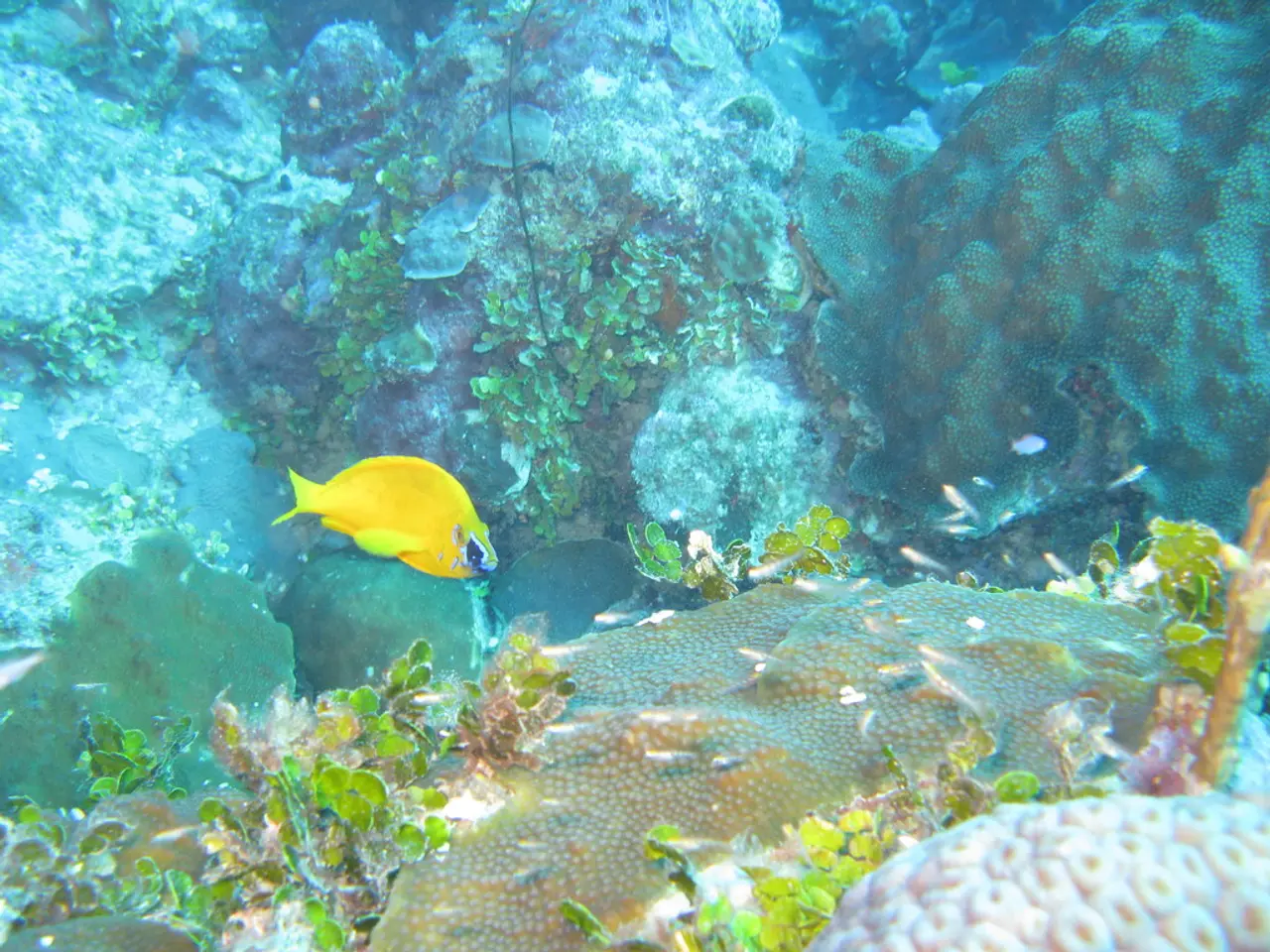Lake water quality: Essential factors to consider before a swim
Swimming in a lake shouldn't necessarily lead to skin rashes, diarrhea, or infections. However, hidden pathogens can cause such inconvenience. Sascha Maier, a water expert from BUND, warns that you can't always spot these troublemakers by eyeing the water.
One warning sign to watch out for is the presence of dead fish or blue-green algae, often referred to as cyanobacteria. These can turn the water green or blue-green, form a scum or a blanket on the surface, or create "clouds" in the water. "If I find myself knee-deep in the water and can't see my feet, I probably shouldn't go in," Maier advises.
After long hot, sunny weather, especially in fertilized fields nearby, the likelihood of blue-green algae increases. Some varieties can irritate the skin while others produce toxins harmful if ingested in large quantities. Dogs are particularly sensitive to these algal toxins.
Unseen to the naked eye, vibrions and cercariae can trigger undesirable reactions in swimmers. Cercariae are tiny larvae that mainly infect water birds but might also try to enter human skin, causing skin irritation. Cercariae thrive in water around 20°C and local authorities usually alert the public if a body of water contains them. For safety, Maier recommends staying away from the aquatic plant area, avoiding shallow water for extended periods, and drying off vigorously with a towel after swimming.
Vibrions become active at temperatures above 20°C and can delay wound healing or lead to severe infections in people with weak immune systems. Vibrions are also more common in saltier waters like the Baltic Sea. Here, staying informed by reading local newspapers is advisable.
Clear water is not always a guarantee of safety. Waters containing dirt from runoff after heavy rains or those close to wastewater treatment plants can also pose risks. According to Maier, lakes not designated as bathing waters may not appear in quality reports, so swimming enthusiasts should also keep an eye out for the aforementioned signs and consult local media for further information.
For comprehensive information on water quality, one can visit the websites of the German Environment Agency, the Federal Institute of Hydrology, and the European Environment Agency. It's essential to remember that health hazards in lakes can include bacterial, viral, algal contaminants, chemical pollutants, and physical hazards that may go unnoticed. By following safety guidelines, swimming can remain an enjoyable open-air activity.
In the health-and-wellness aspect, bacterial contaminants such as Vibrions, which become active at temperatures above 20°C, could delay wound healing or lead to severe infections in people with weak immune systems. In fitness-and-exercise, it's recommended to stay aware of the presence of cercariae, tiny larvae that might cause skin irritation when swimming, especially in waters around 20°C. By understanding and adhering to these science-based guidelines, swimming can continue to be an enjoyable and safe open-air activity.







